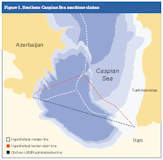
Countries in Asia Pacific are increasing their offshore exploration and production (E&P) activities in order to increase domestic production of energy resources and reduce their rising dependence on imported oil and gas. The region is witnessing increasing import dependence for oil and gas due to its rising energy consumption, which is driven by rapid economic development.
Asia Pacific has witnessed the fastest economic growth of all regions of the world over the last decade. This rapid development has been driven by its emerging economies, which include China, India, Indonesia and Thailand. Rapid economic growth has resulted in a sharp increase in the consumption of energy resources in these key economies. An increase in oil and gas consumption coupled with limited domestic supply has also led to increasing dependence on imported oil and gas.
Due to this dependence, these countries have taken a multipronged approach to ensuring their energy security. Key steps include increasing the domestic production of oil and gas through the development of unconventional resources, the development of conventional resources in offshore areas, and ensuring a supply of imported oil and gas through investing in unconventional and conventional oil and gas projects in international markets.
Major Asia Pacific offshore hubs
The South China Sea, the West Australian Coast and the Gulf of Thailand are major hubs for offshore E&P activities in Asia Pacific. Other significant areas include the Caspian Sea and the Bay of Bengal.
The South China Sea is one of the most prolific areas, being surrounded by nine nations, all of which have significant E&P activities. Some of the main offshore hydrocarbon basins in the South China Sea are the Song Hong Basin, the Nam Con Son Basin and the Cuu Long Basin in Vietnam and the Pearl River Mouth Basin in China. The South China Sea has high potential and is said to have estimated proved reserves (1P) of 7.5MMboepd of oil. Malaysia, China and Vietnam are the major E&P countries. Almost all the big international oil companies (IOCs) operate in the region, along with the national oil companies (NOCs).
The Gulf of Thailand is an extension of the South China Sea and an important area due to its oil and gas reserves. The Gulf of Thailand has prolific basins in Asia Pacific, with some of the most notable being the Malay Basin, the Chumphon Basin, the Pattani Basin and the Kra Basin. The exploration and production carried out in the Gulf of Thailand is dominated by IOCs.
The Western Australian coast is one of the most active offshore development centres with prolific basins including the Carnarvon Basin, the Perth Basin, the Canning Basin, the Browse Basin and the Bonaparte Basin. The major players in the West Australian Coast are IOCs, and the main exploration and production activities taking place in the region are of natural gas.
FPSO activities
Asia Pacific countries use floating production storage offloading vehicles (FPSOs) for commercialising small oil and gas fields in their offshore areas. These vessels are exclusively designed to perform the production, separation, storage and transportation of hydrocarbon from deep seas. They are used in deep seas where reserves are low and setting up fixed platforms may not be an economically viable option. It has been observed that of the Asia Pacific area, China, Australia, Indonesia and Vietnam are the main countries using FPSOs to develop their small oil and gas fields, while other countries are minor players.
Territorial disputes and oil spills
Territorial disputes in some areas with major offshore oil and gas potential are concerns for offshore E&P activities in Asia Pacific. Territorial claims by the littoral states over the Caspian Sea and the South China Sea have been impeding offshore oil and gas developments in these regions for a long time. Such disputes also affect the interest of potential investors in the region.
The risk of oil spills is one of the biggest concerns faced by offshore oil and gas explorers and producers, causing huge destruction to marine life, birds and coastal areas. Some of the recent oil spills in Asia Pacific occurred at Bohai Bay (June 2011) and Montara (August 2009). The region’s countries are trying to make strict laws to prevent the occurrence of oil spills. These developments have forced oil and gas exploration and production companies to follow more stringent norms for offshore activities in order to prevent such disasters reoccuring.
There is much contention in the Caspian Sea regarding the differing claims made by the five countries that border the sea. Kazakhstan, Azerbaijan and Turkmenistan advocate that the sectors should be based on the median line, as seen by the white line of Figure 1, to give a portion of the Caspian directly related to the length of each country’s border with the sea. Iran claims that the sea should be divided into five equal portions, Iran’s portion of which is seen in red, which would give it a larger portion than its coastline would otherwise garner. The territorial dispute in the South China Sea is much more complex, with some areas playing host to as many as six differing claims (see Figure 2).






